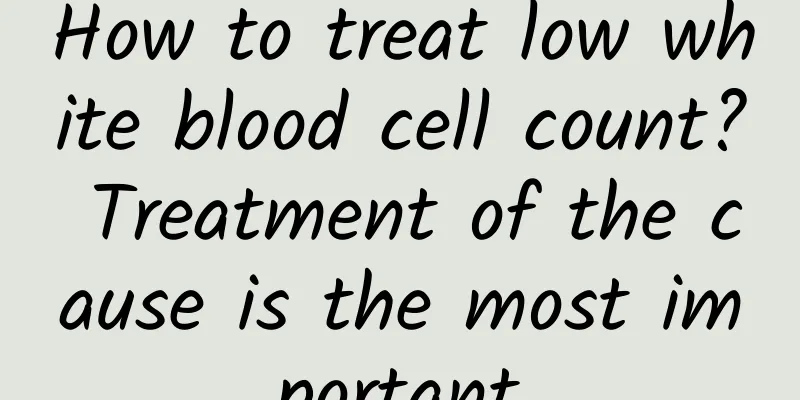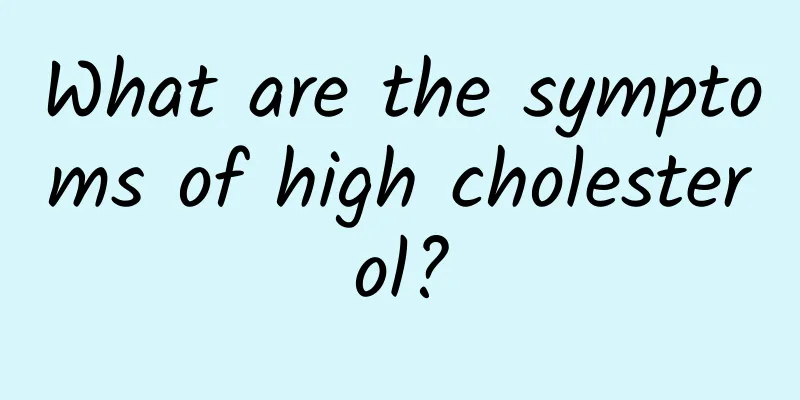How to treat low white blood cell count? Treatment of the cause is the most important

|
Low white blood cell count generally does not show any obvious symptoms. If the low white blood cell count is severe, symptoms such as dizziness, loss of appetite, and fatigue will appear. The treatment of low white blood cell count must be targeted at the cause, and timely treatment of viral infections is the most important. 1. Etiological treatment Contact with suspected drugs or other pathogenic factors should be stopped immediately. Patients with secondary reduction should actively treat the primary disease. After the treatment of acute leukemia, autoimmune diseases, infections, etc., the granulocytes can return to normal after the condition is alleviated or controlled. Splenectomy may be considered for patients with hypersplenism. 2. Prevent and treat infection No special precautions are required for mild reductions. The infection rate increases in those with moderate reduction, so they should reduce going to public places, pay attention to maintaining skin and oral hygiene, and remove chronic infection lesions. For patients with granulocytopenia, sterile isolation measures should be considered to prevent cross infection. Infected persons should undergo bacterial culture and drug sensitivity testing of blood, urine, sputum and secretions of infected lesions, as well as imaging examinations to determine the type and location of infection. Before the pathogen is identified, broad-spectrum antibiotics can be used empirically to cover both Gram-negative and Gram-positive bacteria, and the medication can be adjusted after the pathogen and drug sensitivity results are available. If it is ineffective after 3 to 5 days, antifungal treatment can be added. Antiviral drugs can be added for viral infections. 3. Granulocyte-enhancing drugs Hematopoietic growth factors, such as recombinant human granulocyte colony-stimulating factor (rhG-CSF) and recombinant human granulocyte-macrophage colony-stimulating factor (rhGM-CSF), have a clear efficacy in treating patients with granulocytosis. They can rapidly increase the number of neutrophils and enhance their phagocytic, bactericidal and chemotactic functions. The commonly used dose is 2~10ug/(kg·d). Common side effects include fever, musculoskeletal pain, rash, etc. Lithium carbonate can stimulate the bone marrow to produce granulocytes. The commonly used dosage is 0.6-0.9g/d. The side effects include mild heartburn, nausea, fatigue, etc. It should be used with caution in patients with kidney disease. 4. Immunosuppressants Autoimmune neutropenia and agranulocytosis caused by immune-mediated mechanisms can be treated with immunosuppressants such as corticosteroids. It is not suitable for patients with granulocytopenia caused by other reasons. [2] |
Recommend
Oatmeal honey diet, delicious and nutritious way to lose weight
Oats and honey are both very good nutritional hea...
The difference between closed comedones and fat particles
Sebaceous cysts and closed comedones are both rel...
What seasonings can be added to boiled vegetables for weight loss?
As we all know, the two most important points for...
Abdominal artery aneurysm surgery
Abdominal artery hemangioma is a very special typ...
Is it useful to take folic acid after pregnancy?
As we all know, folic acid is a water-soluble vit...
Don't panic if you have a hot constitution, here are some tips for conditioning
We all know that people's physiques are divid...
How to promote ovulation effectively?
In real life, many women's ovulation is not n...
Symptoms of liver yin deficiency
Everyone's liver plays a very important role....
What to do if your gums are protruding
Everyone knows that the flesh wrapped around the t...
What food can help cure pharyngitis and cough quickly?
Many people feel discomfort in their throats, and...
Which tea is better for cleansing the intestines and detoxifying? Which tea is better for cleansing the intestines and detoxifying?
Many people are troubled by why they get acne for...
Which pediatric massage methods are most popular among children?
With the improvement of living standards, many pe...
Symptoms of superficial gastritis
There are many kinds of common diseases in life. ...
I took diet pills and felt bloated. Can I relieve it by moving my body?
Summer is the season for women to show their bodi...
Post-herpetic syndrome
There are many common diseases. The treatment met...









